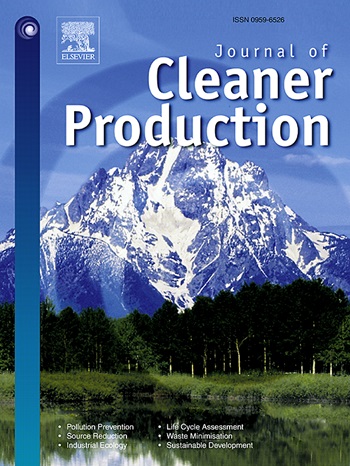用于减轻模式植物硼毒性的智能壳聚糖复合微珠的制备:表征,毒性评估和硼的去除
IF 10
1区 环境科学与生态学
Q1 ENGINEERING, ENVIRONMENTAL
引用次数: 0
摘要
水生生态系统中硼(B)过量对环境健康和生物多样性构成重大威胁。在这方面,应该评价一种有吸引力的战略,以减少水环境中的B毒性和保护水生生物。该研究旨在利用富含角蛋白的智能壳聚糖-磁性复合微珠,并用耐硼细菌(不动杆菌sp.)进一步增强,降低模式植物lena gibba的b诱导毒性。我们测试了不同壳聚糖-磁性复合微珠的B吸附能力,并在文献中首次关注了富含角蛋白的特定类型。研究了在含B矿废水的试验溶液中添加壳聚糖-磁性复合微珠减轻B毒性对长毛猴生长参数(叶数、生物量和EC50值)的影响。结果表明,壳聚糖-角蛋白磁性复合微球(Mag-Ch-K)具有较高的B吸附性能,在pH为7时的最大吸附量为2.875 mg/g。在64 mg L−1 B浓度下,在含有mg - ch - k微球的反应器中,长毛线虫的相对生长速率(0.2065)比不含复合微球的对照反应器(0.1212)高出约2倍。更重要的是,Mag-Ch-K珠显著提高了植物对反应器基质中B的耐受性,EC50值为44.18 mg L−1,而对照组为17.17 mg L−1。该研究为减轻水体中的B毒性提供了一种有前途的方法,通过不动杆菌改性头提供了实际操作,高生长产量和防止B污染冲击。通过高B负荷能力和植物吸收,在含有mg - ch - k - d的反应器中也实现了高B去除率(76%)。这些双重好处鼓励设计者设计基于壳聚糖和浮萍的处理系统,用于富B水的生态保护和污染管理,如B矿废水污染。本文章由计算机程序翻译,如有差异,请以英文原文为准。
Fabrication of smart chitosan composite beads for alleviate boron toxicity in a model plant (Lemna gibba): Characterization, toxicity assessment, and boron removal
Excessive boron (B) in aquatic ecosystems poses a significant threat to environmental health and biodiversity. In this respect, an attractive strategy should be evaluated to reduce B toxicity in the water environment and protect aquatic organisms. The study aims to reduce B-induced toxicity in a model plant, Lemna gibba , using smart chitosan-magnetic composite beads enriched with keratin, and further enhanced with boron-tolerant bacteria (Acinetobacter sp.). We tested different chitosan-magnetic composite beads for their B adsorption capacity, focusing on a specific type enriched with keratin for the first time in the literature. The effects of adding chitosan-magnetic composite beads in a test solution containing B mine effluent to alleviate B toxicity on L. gibba's growth parameters (frond number, biomass production, and EC50 value) were detailly evaluated in the experiment period. Accordingly, the chitosan-magnetic composite beads with keratin (Mag-Ch-K) demonstrated high B adsorption, with a maximum loading capacity of 2.875 mg/g at pH 7. The relative growth rate of L. gibba in a reactor containing Mag-Ch-K beads was measured to be approximately 2-fold (0.2065) higher than that of the control reactor (0.1212) without composite beads at 64 mg L−1 B concentration. More importantly, Mag-Ch-K bead significantly increased the plant's tolerance against B in the reactor matrix, as indicated by an EC50 value of 44.18 mg L−1 compared to 17.17 mg L−1 in the control. This study provides a promising approach to mitigate B toxicity in water bodies, offering a practical operation, high growth production, and preventing B pollution shock via modified bead with Acinetobacter sp. High B removal (76 %) was also achieved from reactors containing Mag-Ch-K-D through the high B-loading capacities and plant uptake. These dual benefits encourage designers to design chitosan and duckweed-based treatment systems for ecological conservation and pollution management in B-rich waters, such as B mine effluent pollution.
求助全文
通过发布文献求助,成功后即可免费获取论文全文。
去求助
来源期刊

Journal of Cleaner Production
环境科学-工程:环境
CiteScore
20.40
自引率
9.00%
发文量
4720
审稿时长
111 days
期刊介绍:
The Journal of Cleaner Production is an international, transdisciplinary journal that addresses and discusses theoretical and practical Cleaner Production, Environmental, and Sustainability issues. It aims to help societies become more sustainable by focusing on the concept of 'Cleaner Production', which aims at preventing waste production and increasing efficiencies in energy, water, resources, and human capital use. The journal serves as a platform for corporations, governments, education institutions, regions, and societies to engage in discussions and research related to Cleaner Production, environmental, and sustainability practices.
 求助内容:
求助内容: 应助结果提醒方式:
应助结果提醒方式:


